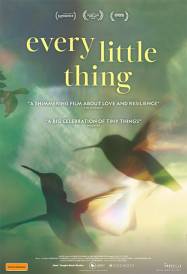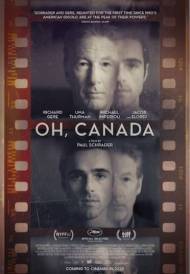Scarlett Johansson Lucy
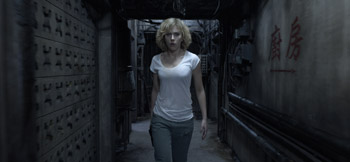
Scarlett Johansson Lucy
Cast: Scarlett Johansson, Analeigh Tipton, Morgan Freeman
Director: Luc Besson
Genre: Action, Sci-Fi
Rated: MA
Synopsis: A woman, accidentally caught in a dark deal, turns the tables on her captors and transforms into a merciless warrior evolved beyond human logic.
Lucy
Release Date: August 28th, 2014
About the Production
Secrets of the Universe: Science and Fiction Unite in Lucy
The human brain and its capabilities have long puzzled and deeply fascinated the most accomplished of scientists. While it has customarily been understood that we tap into much less of our mind's capacity than we are capable of using, the exact percentage has remained uncertain…and ever fluctuating. With that arresting thought in mind, writer/director Luc Besson took the premise as a starting point for a storyline for his new film. He imagined what it would be like if we could access the furthest reaches of our brain, asking himself how that would affect our understanding of life…and our role in it. He pondered: 'Would we have more control over ourselves and others?"
Luc Besson was interested in the notion of having an 'average girl," as he puts it, develop superhuman mental and physical capabilities when her mind is unlocked. He surmises: 'Lucy has problems, like anyone else, and she doesn't know what to do with her life. Yet she's going to reach the most ultimate knowledge in the universe."
Producer Virginie Besson-Silla, who has worked with Luc Besson on three previous films"The Family, The Lady and The Extraordinary Adventures of Adèle Blanc-Sec"reveals that the writer/director actually tinkered with the concept 10 years ago: 'The basis of the story was there, but I don't think Luc was quite ready. I believe he wanted to let it mature." She pauses, 'So he took all those years to finally come back to it."
Although Luc Besson believed that the idea of expanding one's brain capacities made for tremendous action-thriller material, he was particularly intent on grounding"at least in part"Lucy in scientific fact. The filmmaker offers: 'After I met with a few scientists, I was amazed by what they told me: about cancer, about cells, about the fact that we have hundreds of billions of cells that communicate with one another. Apparently, each cell sends out something like 1,000 signals per second. The Web is nothing compared to that. It took me a few years to find the right balance between what is real and what is fantasy."
As he delved further into the concept, Luc Besson reached out to a number of scientists, including world-renowned neurologist Yves Agid, who co-founded the Brain & Spine Institute (ICM) that is based at the Pitié-Salpêtrière Hospital in Paris, of which Luc Besson is a founding member. Agid remembers the conversation he had with Luc Besson about a story that was 'a combination of fact and fiction." He says: 'When Luc Besson told me about the screenplay, I found it extraordinary. Still, I had to rein in his creativity a bit with facts, which was easy in the end, because he understands everything so quickly."
As the neurologist helped Luc Besson walk the line between theoretical reality and imagination, he began to see that creativity for a filmmaker is not dissimilar to the skills needed to work as a scientist. Agid says: 'That's what I find splendid in the film: There are true facts. For instance, Lucy deals with the number of cells in the brain, the number of signals per second produced by one cell, etc. By taking advantage of all these figures, Luc implements a fascinating dynamic throughout the film. Of course, the more Lucy advances through the movie, the more the story becomes fictional, which I find extremely robust. When you see the film, you believe it. It grabs you because it is grounded, to some extent, in reality."
Luc Besson walks us through the research that informed his ultimate story: 'There's a combination of factors that make this possible, involving really bad people and a new kind of drug. Well, actually, it's not exactly a drug. In fact, it's a natural substance that pregnant women produce in the sixth week of natal development called CPH4. I came up with this idea, which according to some doctors I spoke with, is not entirely illogical. At some point, when you open up the capacity of your brain, if you can access 20 percent, you can open 30 percent. When you reach 30 percent, you can open 40 percent, and so on. It's a domino effect. So Lucy is colonizing her own brain, and she can't stop it. She doesn't want it, and she doesn't even know what to do with it."
Earth's New First Woman: Lucy is Reborn
With such strong, unique female characters as La Femme Nikita's titular character, Mathilda in The Professional and Leeloo in The Fifth Element, Luc Besson has created some of the most ruthless, toughest female action heroes in modern film. To portray the lead in his latest film, he needed to find an actress who could be believable as extremely vulnerable, as well as superpowered, when her exposure to an illicit substance inadvertently makes her acquire incredible skills.
Luc Besson-Silla describes the unlikely heroine of this story: 'Lucy is an average girl who's having fun with her friends in Asia, and there's a lot of partying going on. She's discovering life, but she's going to discover it the hard way…and go much further than she would ever expect."
For the role, Luc Besson and his producer reached out to Scarlett Johansson, who has starred in intimate films such as Lost in Translation and Her, as well as action blockbusters including Iron Man 2, The Avengers and, most recently, Captain America: The Winter Soldier. Besson was impressed by the actress' discipline. He explains that she was precise and professional from the get-go: 'When we first met, Scarlett Johansson had read the script and I enjoyed the way she talked about it. She was excited for the right reason, which was the story. At that moment, it was a done deal for me. She was definitely the one."
Scarlett Johansson explains that one of her interests in portraying Lucy is based on the fact that the character 'is in a transient phase in her life when we find her. She's figuring out who she is, and she's feeling like she should probably get her life on track." The actress was not only attracted to the material, but to Luc Besson's vision. She notes: 'The film poses some complex existential questions. It would have been hard to imagine how the script has evolved because so much of that is Luc's vision. Anything I could imagine the film to look like, just from reading the descriptions in the script, pales in comparison to the actual life that Luc breathed into this project."
Scarlette Johansson acknowledges that even though she was initially disoriented by the screenplay's nonlinear structure, she knew that she could trust the director. Quite familiar with Luc Besson's work, she cast aside caution and signed on to the film. 'This is actually what drew me to this project," she insists. 'I had to trust Luc Besson's vision. I remember meeting him and he said, -You have to trust that I know what this is about because it can be vague at times. But if you see what I'm seeing, you'll believe in it.' So, I took a leap of faith. He's a formidable guy who knows what he sees in his mind and wants that vision to be executed perfectly."
Everyone involved in the production acknowledges that Lucy was a highly demanding role. Still, Scarlett Johansson went beyond everyone's expectations. Commends Besson-Silla: 'It was all the more difficult, as Lucy starts off as a plain girl and turns into, as it were, a superhero. She goes through so much. Scarlett was able to take that journey easily."
With such a clear vision of his protagonist, Luc Besson was able to devise a method to help his leading lady get in character. He explains: 'We created something very funny, which Scarlett Johansson had on her wall, to allow her to understand what reactions I wanted from her when I asked her to play, say, 25 percent, or 50 percent, or 70 percent of her brainpower.
'For every 10 percent, we charted out what you could do with that percentage" your level of knowledge and possibilities," Luc Besson continues. 'It was a very good guide.
Every morning she'd look at the chart to see which girl she had to play. If you look at the Lucy at the beginning and the Lucy at the end, they have little in common. When we arrived on set, Scarlett Johansson was exceptional. You can ask for whatever you want and she says, -Okay.' She's always willing to try."
The actress admits that the most challenging part was to portray Lucy as a truly relatable character, despite the psychological and physical changes that she's experiencing: 'As the drug kicks in, Lucy gradually loses the ability to empathise and to feel pain. Even though she can delve deeply into someone's memory and eventually control him physically, she doesn't have any opinion. She loses her preconceived ideas or judgment about the other person. It was difficult to avoid making my performance flat and monotonous. You have to see the humanity behind her circumstances."
Evolution to Revolution: Supporting Cast of the Action-Thriller
As her abilities keep evolving, Lucy reaches out to Professor Samuel Norman, an expert on the human brain, to try to understand what is happening to her. Soon after she is supercharged, she finds herself able to do anything from learning Chinese in an hour to beginning to control space and time. The production was fortunate enough to have Academy Award® winner Morgan Freeman join the team as the world-renowned neurologist whose lifelong focus is how we access the information stored in our brain.
As Freeman is quite a science buff, and particularly enthusiastic about the mind's capacity, the actor was a natural choice. Luc Besson notes: 'Morgan Freeman is the ultimate professor, for two reasons. First of all, he's fascinated by the theory we develop in the movie because he's very familiar with it, which I didn't know before we met for the film.
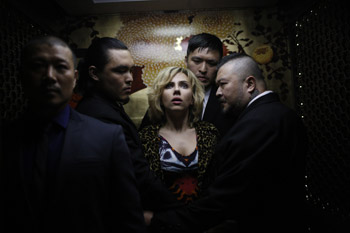 It was a pleasure for him just to talk about it. And secondly, he's such a good actor that you believe everything he says."
It was a pleasure for him just to talk about it. And secondly, he's such a good actor that you believe everything he says."
Besson-Silla was also thrilled to see Freeman come aboard. 'Morgan Freeman is one of the only people who could play God," she enthuses. 'So, to play the character of wisdom in the film, it was pretty obvious that he was the perfect actor."
Morgan Freeman was equally excited to join the cast, admitting that he holds his character in high esteem. 'Professor Norman has written about the brain for years," he says. 'He gives lectures all over the world and has been at the Sorbonne, in Paris, for a number of years. Because he's preeminent in the field, he is tracked down by Lucy, who's trying to figure out what's going on with her brain."
The veteran actor offers that Professor Norman is flattered to be contacted by Lucy: 'When she calls him up and says, -I've read everything you wrote,' he replies, -You can't have.' And when she starts quoting what he wrote, he says, -We've got to meet."
When Lucy's physical and mental abilities are suddenly heightened, she becomes a most valuable prey for the mob who started her down this journey, particularly for local crime boss Mr. Jang, played by South Korean actor Choi Min Sik. 'Mr. Jang is the best villain I've come up with since Gary Oldman's character in The Professional," the writer/director reflects. 'Whereas Lucy is the ultimate intelligence, Mr. Jang is the ultimate devil."
Indeed, Luc Besson wanted to push the envelope when it came to creating Lucy's nemesis. 'In the film business, we're always a little shy about villains," he states.
'When you see the reality on the news, people are much crueler than we can possibly imagine. So we have a lot of leeway when we work on a villain. Mr. Jang is just a purely villainous businessman. He knows that there's a 50 percent chance he'll be dead tonight, so he doesn't care much."
The producer agrees that Mr. Jang is the epitome of evil. 'He has no limits," Besson-Silla reflects. 'He is the worst of humankind. He has no values, no love and no compassion.
He's just in it for business. I don't think he has any emotion. Everything around him is just an object."
Even though the South Korean actor, best known for his role in the critically acclaimed Oldboy, did not speak a word of English or French, Luc Besson believed that he would fit the role perfectly. Says the director: 'It's funny because our body language was our communication system. I'd play the scene, and he'd show me what he made of it. We communicated almost like monkeys at first!" Still, Luc Besson can't speak highly enough of the actor: 'I'm fascinated by Choi. He's one of the greatest actors I've ever met, and he's just adorable and sweet."
Luc Besson-Silla remembers that it took some time to convince the actor to join the cast.
Actually, Lucy is the first international film of which Min Sik has accepted to be a part. 'In the beginning, it wasn't a sure thing that he was going to do the film," she recalls.
'We had to go and meet him in Korea, talk with him and discuss the story. And it was only at the very end that he said, -Okay, I'm interested, I want to be in.'"
As a matter of fact, Min Sik was baffled at first to hear that Luc Besson wanted to meet him. Needless to say, this was an offer he couldn't refuse. 'As a younger actor, I watched Luc Besson's movies," he recalls. 'They were always a great inspiration to me. So I thought -After being an actor for so many years, I'll finally meet this great director.' I think it all came out of my great curiosity. I wondered how he worked on set, what the spirit of the people would be, and what the locations would be like."
Even though her character was tortured by Mr. Jang and his men, Scarlett Johansson speaks highly of her on-screen partner: 'It was wonderful working with Choi," she says. 'We didn't speak the same language but we could communicate very well with our expressions. So even though we were doing scenes that were violent and cold and brutal, his presence was so enigmatic that we could communicate in a kind of spiritual way. But he was lovely and warm, and was always happy to be on set. He was also wonderful to watch because he's so incredibly expressive. Although Mr. Jang could easily just be seen as evil or bad, Choi fills out this character and makes him very multifaceted."
While Lucy is on the run from the mob, she contacts Pierre Del Rio, a French police officer to whom she gives a lead on smugglers trying to evade airport security. Del Rio, played by Egyptian performer Amr Waked, is bewildered when the young lady calls him up, and he doesn't initially give much credit to her story. 'He thinks it's a prank call, or someone who's just taking the piss out of him," offers Waked, who is best known for his role in Stephen Gaghan's critically acclaimed Syriana. 'Eventually, he joins her on her journey and finds out that she's got some extra powers, although he doesn't know where they come from. He's basically stunned by her capabilities, and gradually, their relationship grows closer."
Luc Besson explains that Del Rio embodies naiveté and that for a guy like him, who leads a pretty normal life, Lucy seems like an extraterrestrial. 'He's Voltaire's Candide," says the director. 'He realises that Lucy's powers are so huge that there's nothing he can do. Del Rio represents the audience; he's basically you and me."
The producer observes that the policeman is the antithesis of Mr. Jang. 'As Lucy puts it, Del Rio is a reminder of her humanity because he represents kindness," she shares.
'And he's the one who will be next to her until the end and, in a way, protect her. She's lost all her emotions by being exposed to the drug, but when she's with Del Rio, there's a tiny spark of emotion that's still there."
When his agent called to let him know that Luc Besson wanted to meet and was considering offering him a role for his upcoming project, Waked was thrilled. 'Luc Besson is looking for me? I'm looking for him," Waked jokes. 'Seriously, it was enough that Luc wrote the script and was going to direct it for me to want to do the film. When you read the screenplay, you find out why Luc is such an important director, writer and producer."
Luc Besson-Silla enjoyed the fact that the Western audience wasn't too familiar with the Egyptian performer: 'What I loved about him was that he's a great actor and we haven't seen him in many films," she states. 'I think it's important to have new faces on screen."
With the cast set, the producer reflects upon Luc Besson's interest in making the film one about the way we interact with our environment, and socially as well: 'Luc Besson wanted to show the diversity on this planet and a mixture of all those different cultures. So we have Scarlett Johansson, who is Caucasian, Morgan Freeman, who is African-American, Min Sik Choi, who is from Korea, and Amr Waked, who hails from Egypt."
Time Is Unity: On Location for Lucy
Lensing in Taiwan
When Luc Besson wrote the first version of the script for Lucy 10 years ago, he intended for the action to be set in Taipei, Taiwan. He had gone to the city in 1994 on a promotional tour for The Fifth Element and loved the people and the feel of the city.
When the time came to scout locations for this action-thriller, the filmmakers considered a few different Asian cities to lens the picture"for budget and logistical purposes. Says Luc Besson: 'The funny thing is that, in the end, we shot in Taipei and picked the very hotel I'd stayed in 20 years ago. I couldn't have come up with anything better than what I had on my mind all those years."
Luc Besson-Silla affirms that there was no way Taipei could be re-created elsewhere.
'From the very beginning, he had always pictured the movie in Taipei, because Luc Bessomn wanted it to be set in an Asian city where things are moving so fast. Taipei fit the bill perfectly. Besides, there aren't that many European or American films that have been shot there."
The director enjoyed the shooting conditions in Taiwan, and he actively encourages other filmmakers to film their movies there. 'The people who live in Taipei are the gentlest people I've ever met," Luc Besson enthuses. 'The authorities are trustworthy and helpful with film crews. As well, you have all kinds of real locations"city buildings, seascapes, beaches, forests, mountains"all within 100 miles." He pauses, 'On top of that, this place has the best dumplings in the whole world."
Lucy marks Scarlett Johansson's first time filming in Taipei. 'I just loved being able to explore that city," she says. 'It was so welcoming. In some ways, just the fact that we were all so tired and jet-lagged and out of our element added to the disorientation of my character and the place she's coming out of when she starts being affected by this drug."
In Taiwan, it is customary to say prayers and give offerings to the spirits at the very beginning of any film production. Producer Besson-Silla recalls that experience: 'On the first day, we had a table set up with food and drinks. When I came on set, I was like, -What is this table in the middle of the set?' Someone said, -It's for the spirits.' It was a great experience, and I loved being able to go to another country and explore the local culture. I believe it brings a lot to the crew and to the film."
Luc Besson also fell under the spell of the country's traditions and recounts the production's first day: 'Everyone was holding sticks of incense in their hands and said a prayer in Chinese. Then we bowed, facing north, west, south and east, to chase all the demons from the set. And it worked because we never had a single demon for the entire production. It was so sweet and touching to see that. No matter what your religion, communion is something common to everyone."
À Paris
After Lucy flees Taiwan, she ends up in Paris, where some of the most nail-biting action scenes of the production were shot. Key locations include the famed Rue de Rivoli, just near the Louvre Museum and the Tuileries Garden, the world-renowned Sorbonne University, the Val-de-Grâce military hospital, where high-ranking French officials are treated, and a bustling flea market.
As Luc Besson-Silla remarks, when it came to lensing the film's most intense car chases, the team decided to shoot in the middle of summer, when there are fewer people in Paris. Says the producer: 'Luc Besson had this crazy idea of having Lucy drive her car against traffic on Rue de Rivoli, which is a very busy four-lane, one-way street, between the Louvre and Concorde Square. And there she goes at full speed, in the middle of the day! It was pretty astonishing."
The director was intent on shooting one of the most challenging action sequences of his entire production in a Paris flea market. 'We were in a flea market full of people, at 2 in the afternoon, and cars were just flying all over the place and landing on fruits and vegetables," he laughs. 'There was a lot of security, and after shooting for three days, we had a pretty good stunt."
Min Sik also enjoyed working in Paris: 'Paris has such great food that it's been very painful for me to resist the delicious French cuisine," he says. 'I think I've gained some weight, so it hasn't helped me at all," he laughs.
Cité du Cinéma
Besides shooting on location in Paris, the production lensed portions of the film at a soundstage belonging to the new Cité du Cinéma, Luc Besson's nine-studio facility just outside Paris. The 102,500-square-foot state-of-the-art studio has already hosted several major productions, including recent films such as 3 Days to Kill, The Family, Taken 2 and The Hundred-Foot Journey.
Most of the interiors"such as the hotel suite"and parts of the Sorbonne University were re-created at the soundstage. Besson-Silla elaborates: 'It's much more convenient to work in a studio because it's a more controlled environment. We had so many visual effects that being on a set made it a lot easier to organise."
The director remembers the Sorbonne set: 'This is one of the oldest universities in the world, and we put more than 2,000 rounds of bullets into the walls everywhere. So on the first day, it was all clean. Then, day after day, we just shot the hell out of the place.
You couldn't even see anything in the end because it became so foggy. I'll keep in mind an image of the first day"when everything was so clean"and of the last day, when you couldn't even recognize the Sorbonne." Luc Besson muses: 'The funny thing is that the Sorbonne is all about knowledge, but I dropped out of school at an early age to make films. Now, here I was, making a film on knowledge and intelligence and destroying the ultimate embodiment of knowledge."
Scarlett Johansson marvels at the sets built at the Cité du Cinéma: 'The sets are massive and really detailed," she comments. 'We could be in an apartment, or in a luxurious Taipei hotel suite, or anywhere else for that matter. I was travelling through different universes, all within the studio."
VFX and Sounds from the Presidio of San Francisco
Although a Luc Besson production had never incorporated quite so many visual and special effects before, the director admits he's been working with effects since The Fifth Element, 17 years ago. As he puts it, he wasn't 'some rookie coming in and being lost because there were green screens everywhere." Now, as Lucy involved more than 1,000 special effects shots, the filmmakers decided to go for the world experts at Industrial Light & Magic (ILM) in the Presidio of San Francisco. Senior visual effects supervisor Nicholas Brooks, who won an Academy Award® for his work on What Dreams May Come and most recently served in the same capacity on Now You See Me, oversaw the process.
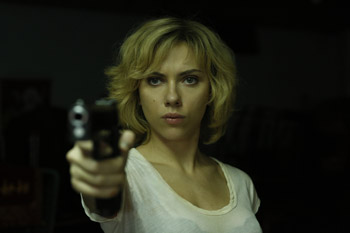 Says the director: 'That's the mecca of visual effects. Mr. Lucas is the master. So we went to them, they read the script and were interested. It was a real treat working with them on this film because they're as kind as they're good. But also, on this type of project, I love to share ideas. There were so many young people working there who had ideas and were willing to try things. Filmmakers often say, -We're doing things like this, and not like that.' But I said, -Here's my idea, but if you come up with something better, I may change my mind.' It became a truly collaborative effort and made for some great teamwork."
Says the director: 'That's the mecca of visual effects. Mr. Lucas is the master. So we went to them, they read the script and were interested. It was a real treat working with them on this film because they're as kind as they're good. But also, on this type of project, I love to share ideas. There were so many young people working there who had ideas and were willing to try things. Filmmakers often say, -We're doing things like this, and not like that.' But I said, -Here's my idea, but if you come up with something better, I may change my mind.' It became a truly collaborative effort and made for some great teamwork."
Waked speaks for the cast about learning so much about special effects and visual effects on this production: 'It's the first time I've done so much green screen on a film and so much shooting in a studio," he observes. 'I'm learning a new technique that I've always wondered about. Coming from Egypt, we hardly shoot so many special effects in a single film, so it's been quite an education for me." Of course, he adds, 'this requires a lot more focus and concentration than when you're actually on location, because you substitute all of that with your imagination. So instead of just focusing on the character and the moment you're playing, you're also focusing on the place you're supposed to be in."
Supplementing the stunning visual effects on Lucy with signature sound is Skywalker Sound's Shannon J. Mills, who served as the production's supervising sound editor and sound designer. The winner of four MPSE Golden Reel Awards for Best Sound Editing on Avatar, Cars, Atlantis: The Lost Empire and Titanic, Mills helped Besson create the signature sounds for Lucy that are complemented by supervising sound editor Guillaume Bouchateau's intricate sound design and two-time Oscar® winner David Parker's (The Bourne Ultimatum, The English Patient) incomparable sound mixing.
Finally, César Award-winning composer Eric Serra's created the film's mesmerising, pulse-pounding score while British musician and composer Damon Albarn, of Blur and Gorillaz, has written a new song for Lucy entitled 'Sister Rust." This beautiful, melodic ballad closes the film. About his work with Besson, Albarn says: 'Luc Besson has a very particular style and approach to filmmaking, which made me want to create something distinctive and cinematic."
Close to the Talent: Besson's Signature Style
A Luc Besson production looks like no other. That definitely has to do with the fact that the writer/director is deeply involved in every aspect of the shoot. Besson-Silla notes that Besson worked in every department before he became a full-fledged director. It wasn't surprising for fellow cast and crew to see Besson add fake blood on some extras or to touch up Scarlett Johansson's makeup, while he was at the camera.
The producer describes her director's process: 'Luc Besson is very hands-on. For him, there's no wall between the technique and the filming of a scene. When he wants things done, he'll just go and do it. That's how he gets the intensity out of the scenes and the actors. Once you're on set, the most important thing is to give the actors center stage and not to take care of the technical side of things. The performers appreciate the fact that he's close to them, holding the camera and talking to them as he's filming."
Luc Besson adds that he has such a clear vision of the picture he is trying to achieve that he likes to have the camera with him most of the time: 'I'm either at the camera, or I have the camera on my shoulder. I like to be very close to the actors. I've realised that, when you say, -Action,' it's like sticking a syringe in the actor's arm. It's an anesthetic.
Between the moment, you say, -Action' and -Cut,' he's on an anesthetic. He's someone else. So I don't want to break that. Sometimes in the middle of a line, I might say, -Okay, breathe. Do it again. Say it again. Go back to the beginning.' I don't cut because I want to get the most I can from the state the actor is in. They appreciate that because what's difficult for them is to build up that pressure for -Action!'"
The cast members find the director's approach both rewarding and demanding.
Scarlett Johansson was particularly taken with Luc Besson's directing style: 'Luc Besson has a veryspecific vision of how he wants each scene to look. That can be tough, but I appreciate that in a director. I appreciate the attention to detail and that unwillingness to settle for anything less. It can be exhausting, but in the end, I never left the set feeling, -I don't know if we really got that.' He's emphatic about the fact that he settles for nothing less than perfect. And that's great!"
Waked agrees with his leading lady: 'The most interesting thing about working with Luc is that he's the cameraman. When the director says, -Stop' or -Cut,' I immediately look at the face of the cameraman. That's my first audience, right there. And depending on his face, I think to myself, -Okay, that went well' or -that didn't go well.' So whenever you see that particular look on Luc's face, you know for sure that you're doing the right thing. At the same time, he doesn't waste time because he's the one framing, he's the one moving the camera. There isn't much time wasted between what you did wrong and what you did right. He's a director who knows precisely every little atom in his frame, where he wants it and how he wants it. It was very educating for me to work with him and, hopefully, I am a better actor for it!"
Min Sik praises the heartwarming atmosphere on the set, stating that both cast and crew members were inclusive even though he didn't speak either French or English: 'Even if the culture and the language are different, we were all working for the same goal. The people were so professional and they were all kind to me. I was moved by them. We were always laughing and joking around. So I have only wonderful memories of the entire shoot."
Professor Agid, who helped the director develop the project, is excited by the film and the experience it provides: 'Lucy is a contribution to knowledge on the brain. Interestingly enough, if you talk to people on the street, they know what an intestine is, they know what the heart is, even if they sometimes think that emotions are in the heart," he laughs. 'But, in fact, they don't know what the brain is. It's unbelievable. So I hope that this film, which is fascinating, will encourage people's interest in the brain.
What you read on the brain is so complicated, so boring and so difficult to understand that the people who see the film will be interested to learn more about the brain."
More than a decade after he wrote the original script for Lucy, Luc Besson is finally ready for the world to see his years-long labor of love. He concludes: 'I want people to come out of the film and say, -Oh, my God! I'd love to find out more about the brain and intelligence,' and then go online to learn more about it."
Lucy
Release Date: August 28th, 2014
MORE
- Mission: Impossible Fallout
- Glenn Close The Wife
- Allison Chhorn Stanley's Mouth Interview
- Benicio Del Toro Sicario: Day of the Soldado
- Dame Judi Dench Tea With The Dames
- Sandra Bullock Ocean's 8
- Chris Pratt Jurassic World: Fallen Kingdom
- Claudia Sangiorgi Dalimore and Michelle Grace...
- Rachel McAdams Disobedience Interview
- Sebastián Lelio and Alessandro Nivola...
- Perri Cummings Trench Interview


